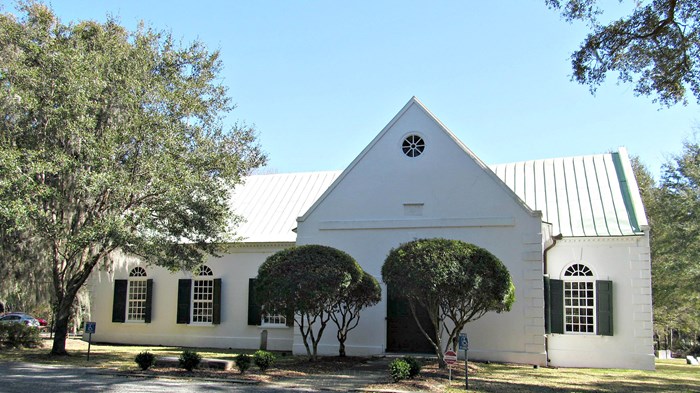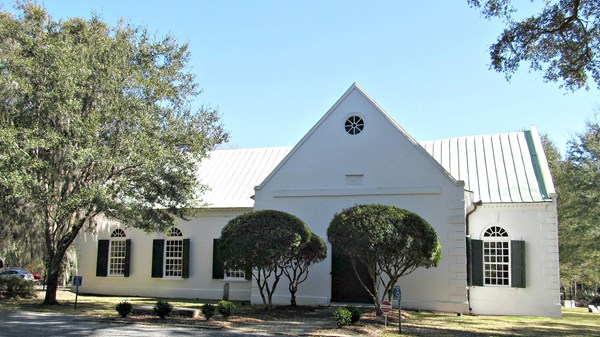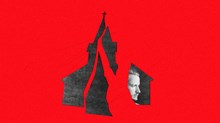

Last month, a South Carolina circuit court judge ruled that 36 Anglican churches in that state don’t have to turn over their property to the Episcopal Diocese of South Carolina.
It was the latest decision in the long legal struggle between the Episcopal Church in South Carolina and the more conservative Anglican congregations, which officially broke away in 2012.
“I’m encouraged but not elated,” said Mark Lawrence, the bishop of the Anglican Diocese of South Carolina. “The mill of the legal system grinds slowly, so I try not to be overly discouraged when it seems to have gone against us, nor elated when it goes for us.”
Lawrence said he’s cautiously optimistic about the latest ruling but expects an appeal.
The chancellor of the Episcopal Church in South Carolina, Thomas S. Tisdale Jr., has said the ruling was “not a final decision,” but “yet another step on a long journey to full reconciliation within our diocese.”
Molly Hamilton, the diocese’s communications director, said Tisdale hopes that the breakaway congregations will come back. “Our vision is for every returning congregation to live into its future as a vital, mission-minded Episcopal congregation,” she said.
In the Anglicans’ view, that’s not likely. “I think if that was going to happen, it would have happened a long time ago,” Lawrence said.
Lawrence’s Anglican diocese began its legal dispute in 2013, a few months after leaving the Episcopal Church over doctrinal disagreements, including whether belief in Jesus is the only way to salvation and whether homosexual behavior is sinful.
The theologically conservative breakaway churches started the Anglican Diocese of South Carolina a few months later and joined the Anglican Church in North America (ACNA) in 2017.
Lawrence was at the center of the controversy leading to the split after the Episcopal Church tried to remove him for opposing the ordination of LGBT clergy. Lawrence said if the Episcopal Church re-absorbed the congregations now under the Anglican umbrella, they’d surely “kick out” existing clergy, including him.
Even though the ruling doesn’t put an end to disputes between the denominations, dozens of Anglican congregations are celebrating that, for now, their church buildings are theirs. Some of the South Carolina churches are among the oldest in the country.
Old St. Andrew’s Parish Church in Charleston, South Carolina, deserves its qualifier. The unassuming white stucco building, which forms the shape of a cross, was first built in 1706, then rebuilt in the 1760s after a fire. Deep green shutters hug its windows. Arched window panes and sloped ceilings bathe the altar in natural light.
Like many historic Southern churches, Old St. Andrew’s has a dark past. Its pre-Civil War ministers supported slavery and deliberately omitted the names of churchgoing slaves from membership rolls. The church endured through another fire, an earthquake, and a hurricane over the years, and is now the oldest church building south of Virginia that still holds weekly meetings.
The church’s most recent trial has unfolded inside a courtroom. Lawrence said his diocese has spent millions now on the lawsuits, with most of that coming directly from congregations or the diocese itself.
In addition to the current case at the state level, there’s also a federal case pending. He also worries the public nature of the dispute could be harmful to the larger church’s witness.
“Clearly I believe it is harmful,” Lawrence said. But it would be worse to walk away from the buildings he’s meant to protect, he said.
The fracture in South Carolina follows similar breaks in other states where conservative congregations have left the Episcopal Church. Episcopalians have fought for years to retain legal rights to the church buildings and intellectual property associated with those breakaway churches, and state courts in most cases have sided with the denomination.
The Episcopal Church in California, Illinois, Pennsylvania, and Virginia have won the rights to most of the church properties in those states, even if the congregations inside had left.
In 2017, the South Carolina case looked like it might go the same way. A state Supreme Court ruling—which consisted of an unprecedented five wholly separate opinions—paved the way for the Episcopal Church in that state to reclaim dozens of church buildings that were currently home to Anglican congregations. The South Carolina Anglicans appealed to the US Supreme Court, which declined to hear the case a year later.
So the issue fell once again to the South Carolina Circuit Court, where the Anglicans filed a motion for “clarification” on the five separate Supreme Court opinions. This most recent ruling was the courts’ response to that request.
Judge Edgar Dickson wrote that the breakaway Anglicans, including Old St. Andrews, are the rightful legal owners of their various parish buildings.
The myriad South Carolina court decisions that paved the way for this one are convoluted. Each new ruling represents a switch from a previous one, and even a single “ruling,” such as in the case at the South Carolina Supreme Court in 2017, can include multiple opinions.
Still, judges in South Carolina and in other states have tried to clarify that their decisions fall into the legal realm, rather than interfering in theological or ecclesiastical disagreements. The court was not tasked with deciding who is interpreting the Bible correctly or which faction is the “rightful” diocese.
Instead, as Dickson wrote in June, the judges viewed their job as to interpret church documents as they would any other legal document and to hold the parties accountable to their legal agreements.
In this latest ruling, the church document in question was the Dennis Canon, an Episcopal Church agreement from 1979. The Episcopal Church claims the Dennis Canon grants it legal rights to all church properties belonging to its parishes. Judge Dickson, however, found that the Anglican Diocese of South Carolina was not legally bound by the Dennis Canon.
A similar ruling was filed in Texas earlier this year. The state supreme court there said roughly 60 parishes that split from the Episcopal Diocese of Fort Worth several years ago can keep their own property.
Still, the legal disputes in Texas and South Carolina aren’t over. Both groups in Fort Worth, for example, persist in calling themselves the Episcopal Diocese of Forth Worth, and there is a trademark case pending over that name.
In South Carolina, the Episcopal diocese filed a motion June 30 asking for judges to reconsider and calling the recent ruling “arbitrary and capricious.” If the circuit court judge won’t change his ruling, the diocese is expected to appeal to the State Supreme Court.
“There’s no way [the Episcopal Church] would fill the 50-some parish churches that we have, not even close,” Lawrence said.
If the Anglican Diocese were to lose ownership of its now 55 churches in South Carolina (excluding those that have been planted since the split), many buildings would be either sold or stand empty, Lawrence said.
He pointed to a similar situation in the Diocese of San Juaquin, California, where the courts granted the Episcopal Church legal ownership of several church buildings that are now either empty or home to much smaller congregations.
According to the General Convention of the Episcopal Church, active membership in the church in the US decreased by nearly 20 percent from 2008 to 2018. Today, there are an estimated 6,900 open Episcopal parishes and roughly 560,000 regular weekly attendees.
But the 2012 split in South Carolina gutted the Episcopal diocese there. Before the parishes broke away, there were 73 open Episcopal parishes or missions and an average of 12,000 weekly attendees. In 2018, there were just 31 Episcopal parishes and roughly 3,000 average weekly attendees.
Hamilton at the Episcopal Diocese of South Carolina said the data starting in 2014 shows they’re actually the fastest-growing diocese in the US. The number of baptized members has grown by nearly 19 percent since then.
“Since the breakaway group disassociated from our diocese, we have seen continued and steady growth in the churches, congregations, and members that remain with the historic diocese and the Episcopal Church,” Hamilton said.
Meanwhile, the Anglican Church in North America remains much smaller. According to 2019 data, there are 972 open congregations and an average of roughly 128,000 weekly attendees. In South Carolina, Anglican Bishop Lawrence said some of his congregations are growing and some are not. “That was the case before the lawsuit, that will be the case after the lawsuit,” he said. Still, he believes it’s likely the legal dispute has hindered the church’s growth.
In Fort Worth, the Episcopal diocese has seen little change since 2013. Attendance at the 16 parishes has stayed roughly the same or decreased only slightly since 2013. The breakaway diocese, on the other hand, now has 56 congregations.
Back at Old St. Andrews Parish Church in Charleston, face masks are required in the sanctuary and church hallways as Father Marshall Huey works to keep his flock safe from the coronavirus. After last month’s ruling, though, he penned an open letter to his congregation threatening hugs all around.
“Thanks be to God for this decision and for all it will mean for our future,” Huey wrote. He invited church members to join that afternoon for a prayer of thanks. “I hope to see you at noon… we will try to maintain social distancing, but I might not be able to restrain myself from hugging each one of you.”

Support Our Work
Subscribe to CT for less than $4.25/month


















